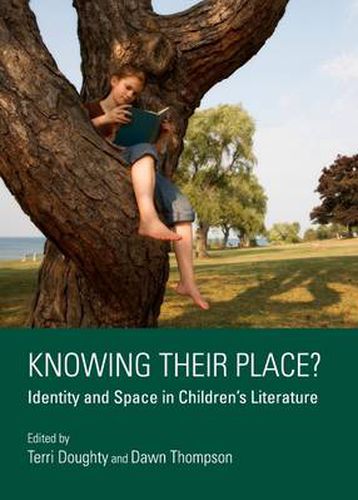Readings Newsletter
Become a Readings Member to make your shopping experience even easier.
Sign in or sign up for free!
You’re not far away from qualifying for FREE standard shipping within Australia
You’ve qualified for FREE standard shipping within Australia
The cart is loading…






Traditionally in the West, children were expected to know their place, but what does this comprise in a contemporary, globalized world? Does it mean to continue to accept subordination to those larger and more powerful? Does it mean to espouse unthinkingly a notion of national identity? Or is it about gaining an awareness of the ways in which identity is derived from a sense of place? Where individuals are situated matters as much if not more than it ever has. In children’s literature, the physical places and psychological spaces inhabited by children and young adults are also key elements in the developing identity formation of characters and, through engagement, of readers too. The contributors to this collection map a broad range of historical and present-day workings of this process: exploring indigeneity and place, tracing the intertwining of place and identity in diasporic literature, analyzing the relationship of the child to the natural world, and studying the role of fantastic spaces in children’s construction of the self. They address fresh topics and texts, ranging from the indigenization of the Gothic by Canadian mixed-blood Anishinabe writer Drew Hayden Taylor to the lesser-known children’s books of George Mackay Brown, to eco-feminist analysis of contemporary verse novels. The essays on more canonical texts, such as Peter Pan and the Harry Potter series, provide new angles from which to revision them. Readers of this collection will gain understanding of the complex interactions of place, space, and identity in children’s literature.Essays in this book will appeal to those interested in Children’s Literature, Aboriginal Studies, Environmentalism and literature, and Fantasy literature.
$9.00 standard shipping within Australia
FREE standard shipping within Australia for orders over $100.00
Express & International shipping calculated at checkout
Traditionally in the West, children were expected to know their place, but what does this comprise in a contemporary, globalized world? Does it mean to continue to accept subordination to those larger and more powerful? Does it mean to espouse unthinkingly a notion of national identity? Or is it about gaining an awareness of the ways in which identity is derived from a sense of place? Where individuals are situated matters as much if not more than it ever has. In children’s literature, the physical places and psychological spaces inhabited by children and young adults are also key elements in the developing identity formation of characters and, through engagement, of readers too. The contributors to this collection map a broad range of historical and present-day workings of this process: exploring indigeneity and place, tracing the intertwining of place and identity in diasporic literature, analyzing the relationship of the child to the natural world, and studying the role of fantastic spaces in children’s construction of the self. They address fresh topics and texts, ranging from the indigenization of the Gothic by Canadian mixed-blood Anishinabe writer Drew Hayden Taylor to the lesser-known children’s books of George Mackay Brown, to eco-feminist analysis of contemporary verse novels. The essays on more canonical texts, such as Peter Pan and the Harry Potter series, provide new angles from which to revision them. Readers of this collection will gain understanding of the complex interactions of place, space, and identity in children’s literature.Essays in this book will appeal to those interested in Children’s Literature, Aboriginal Studies, Environmentalism and literature, and Fantasy literature.